The Raizer Lifting Chair vs Inflatable Patient Flat Lift – which is best for hospitals?
If you’re working on improving the outcomes of inpatient falls in your hospital, you’re likely to be looking at implementing lifting equipment to enable your staff to safely and quickly respond to falls.
The purpose of this article is to compare the Raizer lifting chair with patient flat lifting systems and give you a clear understanding of the differences, so you’re able to make the best decision for your hospital.
What is a patient flat lift?
A patient flat lift is a type of lifting equipment used to safely lift a fallen person in a supine position, to easily transfer them to a bed or stretcher. Patient flat lifts are air-assisted lifting devices and require a compressor to inflate them and lift a fallen person.
Patient flat lifts are especially useful for lifting and transferring patients who are very frail and are unable to mobilise from a device such as a Raizer lifting chair.
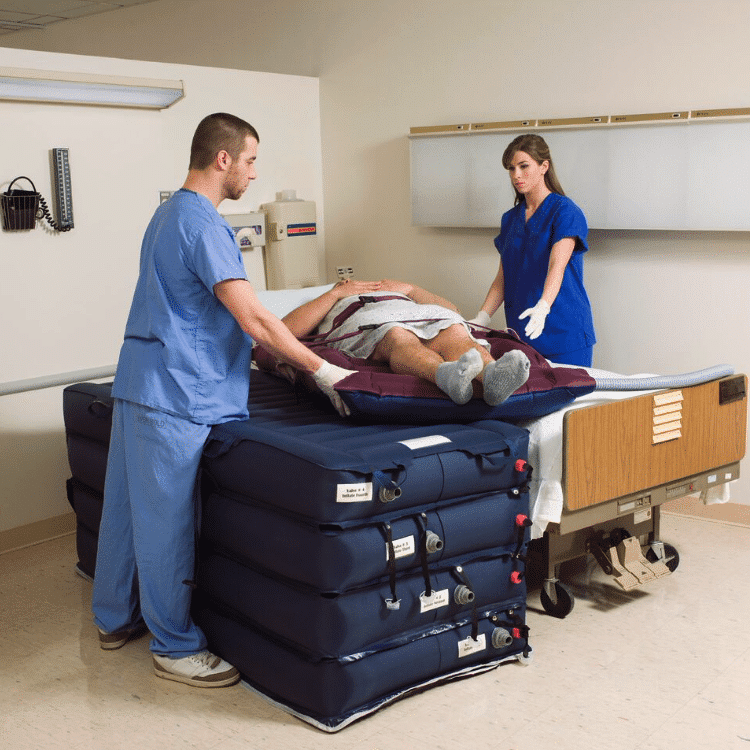
Examples of patient flat-lifting equipment
1. Flojac
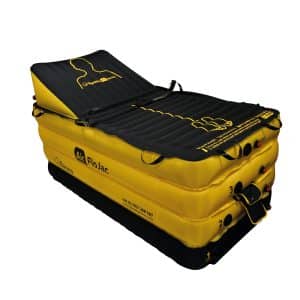
The Flojac is an air-assisted lifting device, designed to help clinicians safely lift patients weighing up to 500kg from the floor.
The powered device can also reduce the manual handling required for lateral transfers from one surface to another, reducing the risk of musculoskeletal injury to staff.
Key features:
- 500kg Safe working load
- Wedge for added patient comfort
- Multi-layered inflation
- 10 TPU handles to enable better posture in movement
- Easy to inflate and deflate
- No removable parts
- Made and Serviced in the UK
2. Hoverjack
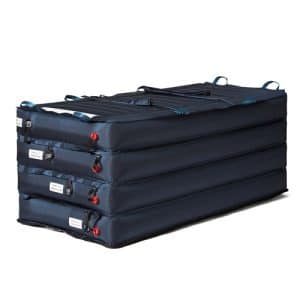
HoverJack air patient lift allows caregivers to safely lift individuals who have fallen without assembling a lifting team. HoverJack consists of four chambers that are inflated sequentially to comfortably lift patients from floor to bed or stretcher in a supine position.
Key features:
- 545kg Safe working load
- Multi-layered inflation
- Quick-release valves to lower the patient if needed
- Teflon® coated bottom – Makes it easier to transfer the individual
- Radiolucent and MRI compatible – For artefact-free imaging
- Available in 2 sizes – 32 “ and 39”
3. Mangar Rhino
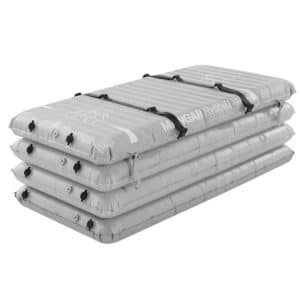
The Mangar Rhino is an inflatable lifting device which lifts a person in the supine position from the floor to the height of a bed or stretcher. It is powered by the Airflo Duo which operates on both mains and battery power.
Key features:
- 500kg Safe working load
- Mains and battery operated
- Lightweight anti-rip material
- Complete Supine Transfer System weighs under 20kg (including Rhino, Swift, Airflo Duo and Roller Bag)
- CPR function included
- 7-year expected lifespan
- Made in the UK
What is the Raizer 2 Lifting Chair?
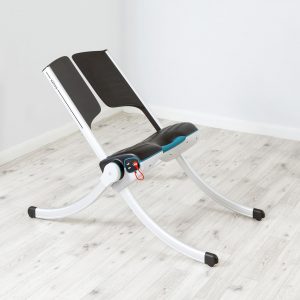
The Raizer 2 is a motorised lifting chair that assembles around a fallen person to lift them up from the floor after they have had a minor or no-injury fall. The Raizer 2 is made up of seven large parts: four legs, two backrest pieces, and the seat, which holds the motor mechanism.
Key Features:
- 150kg Safe working load
- Fast operation – typical operation including assembly is about 3 minutes
- Reliable – 80 lifts on one battery charge
- Compact and low weight
- Suitable for one-person operation
What are the differences between patient flat lifts and the Raizer Lifting Chair?
1. Intended use
One of the main differences between patient flat lifts and the Raizer lifting chair is how they operate and subsequently their intended use.
Whereas the Raizer lifting chair is most suitable for lifting mobile and uninjured fallers, patient flat lifts are more appropriate for lifting very frail, unwell, or injured fallers. This is because the flat lift lifts the person in a supine position and doesn’t require them to mobilise after being lifted; they can be transferred straight into a hospital bed or stretcher.
2. Manual handling required
To use a patient flat lift, the fallen person has to be rolled to insert the equipment underneath them. As well as increasing the risk of injury to staff, this can also be distressing and uncomfortable for the patient.
Flat patient lifting equipment also requires at least two people to operate safely, which has a negative impact on staff resources.
In comparison, the Raizer lifting chair assembles around a fallen person and requires very little manual effort from the caregiver, and can be safely operated by one person.
3. Size
Another clear distinction between patient flat lifts and the Raizer lifting chair is the actual size and weight of the equipment.
Patient flat lifts are designed to be larger than the footprint of a fallen person and inflatable to the height of a bed or stretcher, and as a result they are very large pieces of equipment which require a lot of space to operate in safely. Even when folded down for storage they take up more room than the Raizer and they all weigh around 20kg.
The Raizer disassembles into two compact packages – a seat unit and a backpack – which take up minimal storage space and weigh a total of 13kg.
4. Speed of operation
The Raizer lifting chair is very quick to use, with the typical operation including assembly and lifting being around 3 minutes.
Using a patient flat lift to respond to a fall is a longer and more complex process. First, the patient needs to be rolled to insert the equipment underneath them. Then, each section of the device needs to be inflated separately to lift the fallen person, and each section needs to be deflated after the lift, which all adds to the total time it takes to respond to a fall using a flat lift.
5. Safe working load
Patient flat lifts are typically designed to cope with very heavy loads; all of the examples in this article have a safe working load between 500kg and 545kg. This makes patient flat lifting equipment suitable for use with bariatric patients.
By comparison, the Raizer lifting chair is designed to suit the majority of mobile fallers and has a lower safe working load of 150kg.
Summary
In summary, there are several clear distinctions between the Raizer Lifting Chair and patient flat lifting equipment, and I trust this article has given you a good overview of the differences. It’s clear that whilst both types of equipment have positives and negatives, they both serve their own unique purpose very well.
In fact, a lot of hospitals would actually own both types of lifting equipment – patient flat lifting equipment and Raizer Lifting Chairs – to allow them to respond to every type of faller in their hospital. Raizer lifting chairs are most popular with therapy teams and those dealing with older people and rehabilitation, whereas patient flat lifting equipment is used more often in critical care departments.
To discuss your specific needs and requirements with us, and to arrange trials or demonstrations of equipment, feel free to reach out to us on 01473 741144, or via the contact form at the bottom of this page.
Related articles
The Best Falls Lifting Equipment For Hospitals In 2023
How Much Do Falls Cost The NHS?
Who Is The Raizer Lifting Chair For And Who Is It Not For?
Get in touch
Got a question or want to send us a message? Let’s talk.